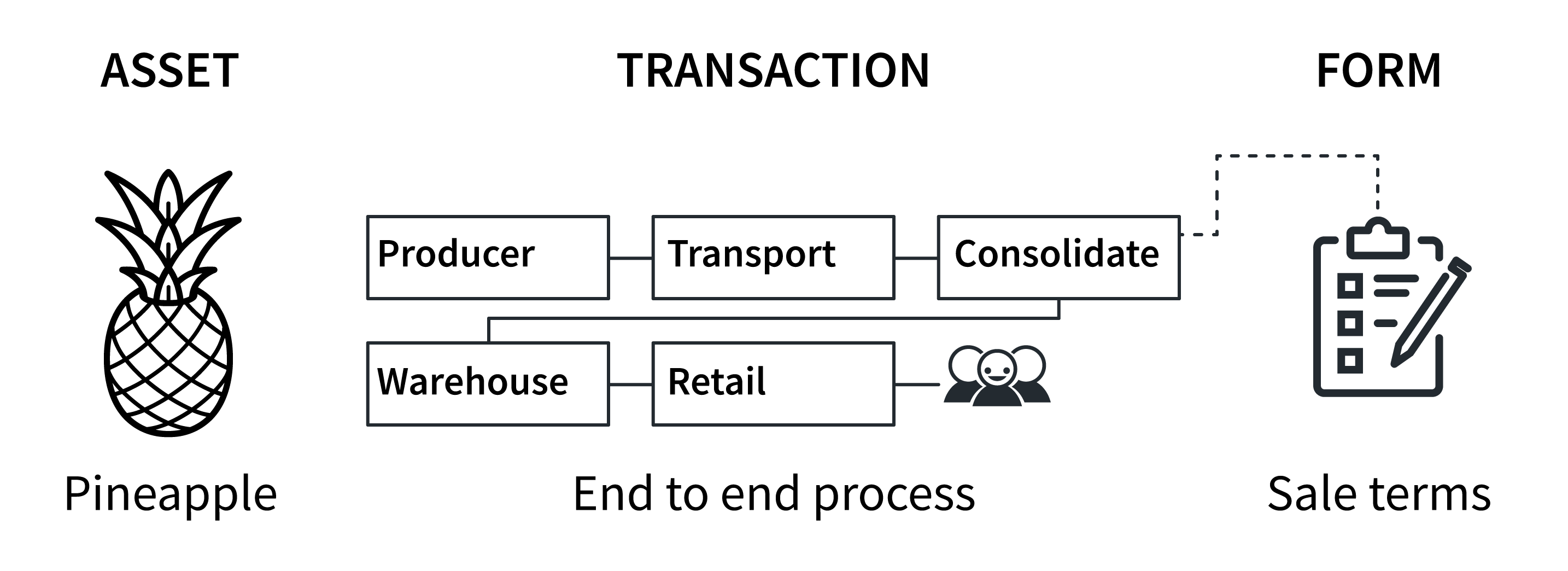Building blocks
Tellus enables you to model your business through 2 main business concepts: assets and transactions. Whilst transactions can also have forms associated.

Deep dive on the key concepts
Assets |
Transactions |
| How do you represent the value of the real world? Assets allow you to define what information represents physical assets and associate them with transactions. Assets can be anything. From real world assets like a building or a car to people or reward points. For example in an insurance use case, assets could be patients and operation rooms. Here is where your business point of view comes into play. Asset structures can be simple as text-based and numeric fields, to nested lists and complex objects. |
Transactions are the basis for business relationships. Transactions can be multi-step multi-company processes or simple one-step processes. For example, an insurance claim involving hospitals and insurers can be a 5 steps transaction whereas a sale transaction can involve just 2 steps. Each step in a transaction has different business rules.
FormsBusiness relationships are usually regulated by common formats and data structures. Contracts, registries, logs, etc. Forms allow you to create the structure that each step of a transaction needs, and assign them to specific owners. For example, an insurance claim may need a form filled from the hospital and at the end an approval document. Those structures can be modeled by simply using Tellus' Admin Console. |
Service Accounts (blockchain identities) |
| Tellus can also represent your blockchain identities as Participants, allowing you to work with their certificates. For example, that just one specific company can approve a bill of lading. You don't create participants on Tellus, you create them on your own blockchain, and make the identity (certificate) enroll as a participant in Tellus. With these 4 simple yet powerful business concepts you can model almost any real-life relationship between business networks. |